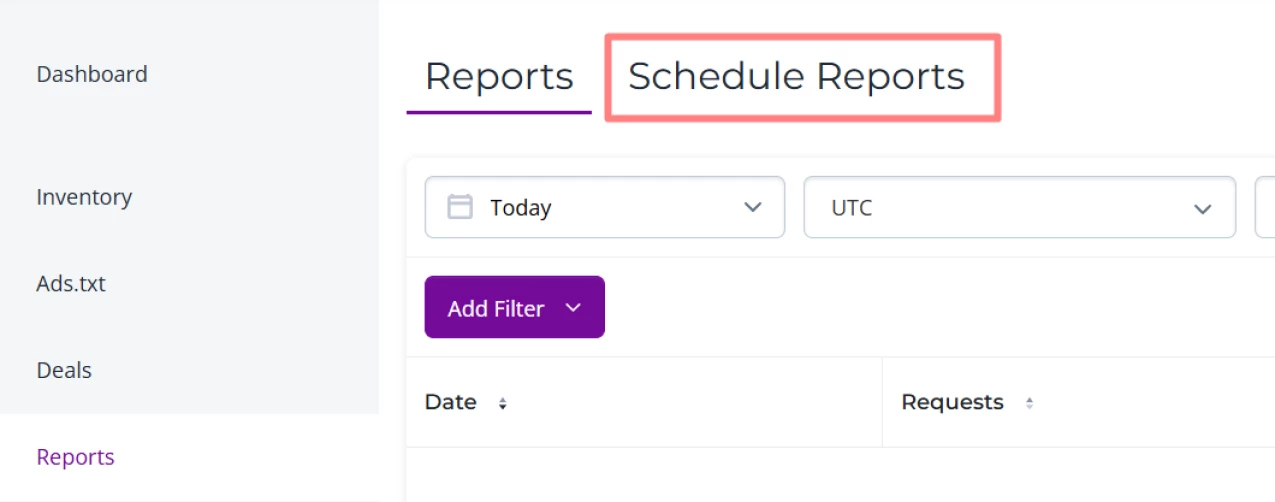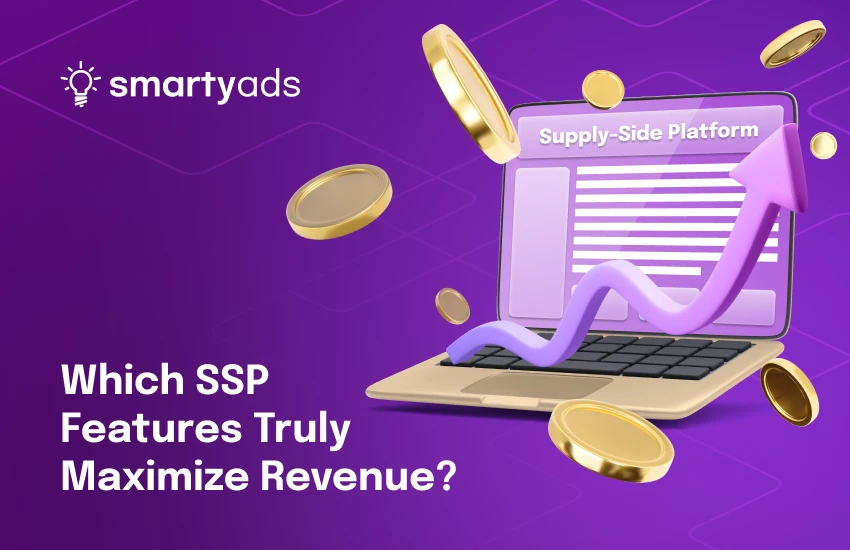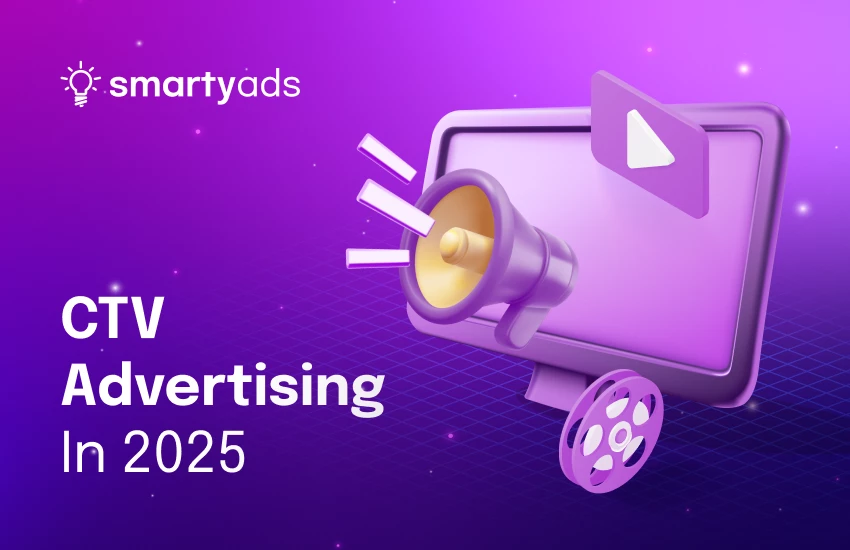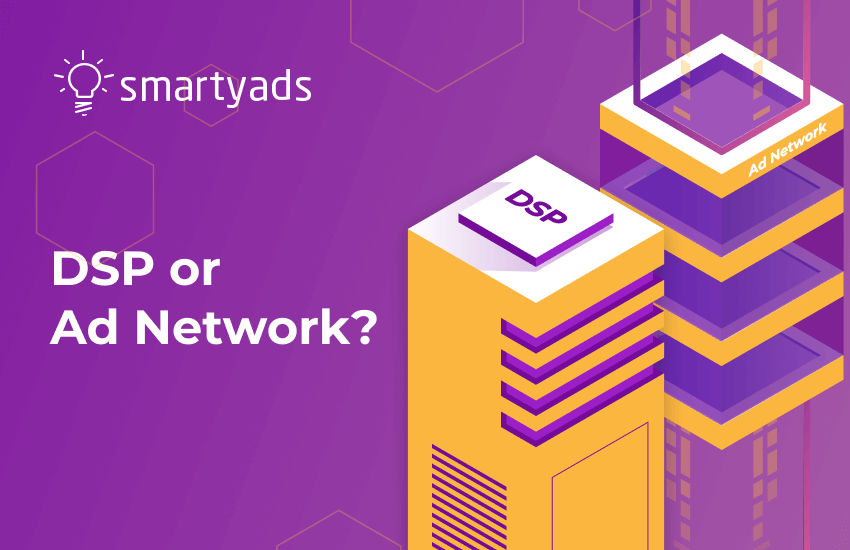Digital advertising has become a high-stakes game. Every impression counts, and every click represents potential revenue. In 2024, U.S. digital ad revenue reached $258.6 billion, growing nearly 15% from the previous year (IAB report). Globally, advertisers are expected to spend more than $1 trillion across all media according to the Global Ad Spend Outlook 2024/2025.
For publishers, this explosion in ad spend is both an opportunity and a challenge. You want to capture as much of that revenue as possible, but the digital ecosystem is complex. This is where a Supply-Side Platform, or SSP, comes in. Think of it as the control tower of your ad operations: it connects your inventory with premium buyers, automates auctions, and provides insights that let you make smart, timely decisions. The right SSP doesn’t just serve ads; it helps you unlock the full revenue potential of your digital assets while maintaining a smooth and predictable user experience. In this article, we’ll focus on 7 core features that make an SSP a revenue engine for publishers in 2025 and beyond.
Convenient dashboard – full visibility & control
While it may seem obvious, the dashboard should never be underestimated in platforms such as SSP, as it serves as a centralized hub offering comprehensive transparency over your ad inventory performance. Here, publishers can track essential metrics, such as ad revenue, eCPM trends, backfill, and impressions, in real-time. This granular data helps identify revenue growth opportunities and detect performance bottlenecks early.
Expert advice: Use the dashboard filtering to analyze top-performing ad placements and top ad inventories, and see the impression count and revenue they generate. On SmartyAds SSP, you can also analyze inventory by day and by hour. Additionally, you can track effectiveness by choosing the metrics you want – aside from impressions, you can select clicks, bid responses, and budget requests to obtain a comprehensive picture.
For example, spotting a surge in eCPM on mobile video can highlight growth areas worth expanding. This way, having a full picture of your inventory performance reflected in the dashboard and in real time ensures you instantly access your inventory insights, saving time and focusing decision-making.
Managed demand integration – Google MCM & Beyond
In the world of SSPs, strong demand integration is the backbone of higher yield. The broader and more competitive the pool of demand sources, the better the chances that every impression finds its highest-value buyer. This is where seamless connections to multiple premium partners come into play, ensuring publishers don’t leave money on the table.
SmartyAds SSP enables exactly that by combining Google’s Multiple Customer Management (MCM) program with a multitude of demand partners. Each impression is exposed to real-time competitive auctions, creating upward pressure on CPMs and maximizing revenue potential.
Example: A single banner impression can simultaneously compete across Google AdX and a variety of DSPs. With more buyers in the race, the auction intensity rises — and so does the average CPM, directly benefiting the publisher.
Expert advice: For optimal results, activate header bidding and Google MCM together. This blended approach combines premium reach with the scale of programmatic demand, streamlining competition into one transparent and revenue-boosting auction environment.

Bulk upload for web & in-app inventory
For publishers managing a wide range of ad assets, efficiency is everything. When campaigns scale, manual setup for every placement becomes not only time-consuming but also prone to error. That’s why bulk upload tools are essential in modern SSPs — they streamline operations, cut down on repetitive tasks, and accelerate time-to-revenue.
SmartyAds SSP simplifies this process with bulk upload functionality for both web and in-app inventory. If you have a list of domains, you can use a “Bulk upload” option while adding inventory (just upload the .txt file).
To illustrate the point, an app developer launching new ad placements across various screens can upload all configurations in a single file, rolling out monetization instantly instead of updating each slot manually.
Best practice: Keep bulk uploads updated to reflect content rotations, seasonal ad slots, or new app features. This proactive approach ensures your inventory setup stays fresh, aligned with audience behavior, and optimized for maximum yield.
Broad and flexible integrations
Today, publishers often rely on multiple platforms, formats, and delivery systems. That means smooth integration isn’t just a convenience — it’s a necessity. Flexible integration options ensure that monetization partners fit seamlessly into your existing stack without disrupting performance or user experience.
SmartyAds SSP supports a wide range of integration types, including direct JS tags and asynchronous tags (for faster page rendering), as well as Prebid.js setup and Google Ad Manager tags. This flexibility allows publishers to adopt the method that best suits their infrastructure while maximizing compatibility and control.
For example, a publisher operating a complex Prebid.js header bidding environment can connect SmartyAds SSP demand without losing control over latency.
Best practice: Always align integration choice with your goals. Opt for asynchronous or lightweight solutions when page speed is a priority, and balance technical setup with user experience to achieve both strong engagement and high revenue.
Adaptive size for web formats
Ad experiences today occur across devices with very different layouts, so a single rigid banner size can’t always guarantee good results. Adaptive sizing solves this by allowing ads to automatically adjust to available inventory space while maintaining a user-friendly layout. This not only improves the visual experience but also helps publishers reduce wasted inventory and maximize revenue.
Example: Imagine a responsive web page that, on a desktop, fits a classic 300×250 placement. On mobile, that same slot might scale down to 320×100 or 300×50, still serving an ad without breaking design or leaving empty space.
Best practice: Use adaptive size feature on SmartyAds SSP to enable effective monetization across multiple devices. This ensures every impression opportunity is filled while keeping the content experience seamless, boosting both fill rates and engagement.
Premium demand & high-quality buyers
In modern programmatic advertising, publishers maximize revenue by giving multiple buyers the chance to compete fairly for each impression. Technologies like header bidding and unified auctions have become essential because they enable demand from various sources—SSPs, DSPs, ad exchanges, and direct deals—to bid simultaneously in real-time. This open competition typically leads to higher CPMs, better fill rates, and more transparent pricing compared to traditional waterfall setups, where buyers had to bid sequentially.
Header bidding, in particular, ensures that every eligible buyer has an equal chance to win the impression before the ad server determines the winner. Unified auctions then consolidate all bids—direct sales, programmatic guaranteed, and open exchange—into one fair competition, ensuring publishers achieve maximum yield from each impression.
Example: When a page loads, bid requests can be sent simultaneously to Google ADX, major DSPs, and other SSPs. The result is a diverse pool of buyers competing in one unified environment, where the highest bid wins, regardless of the source.
Best practice: On SmartyAds SSP, publishers can activate Google MCM integrations alongside hundreds of demand partners, blending premium direct deals with wide-scale programmatic demand to drive revenue growth.
Insights from analytics
In programmatic, data is the compass that shows publishers where revenue is being made — and where it quietly slips away. Without it, underperforming placements stay hidden, while high-value ones don’t get the spotlight they deserve.
That’s why detailed reporting in SmartyAds SSP matters. In the Reports section, you can break down performance by country, ad format, inventory, placement, deal, or even ad size. Want to track by the hour instead of the day? Or filter the results to see only video inventory in a specific geographic area? It’s all configurable. With a few clicks, you decide which metrics to display and how you want them grouped.
And because optimization doesn’t always wait for office hours, reports can be scheduled to land in your inbox automatically — daily, weekly, or at the exact time you choose. This way, you don’t just see how ads are performing; you stay ahead of trends before they shift.

The bottom line
In today’s fast-moving digital ad market, publishers know that attracting traffic is only half the battle. The real challenge is making every impression count — turning audiences into steady revenue without sacrificing user experience. That’s where a smart SSP comes in. With the proper setup, publishers can tap into premium demand, fine-tune inventory performance, and stay competitive even as buyer expectations evolve.
Ready to see your revenue grow? Register on SmartyAds SSP in just a few clicks.





